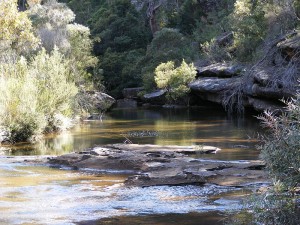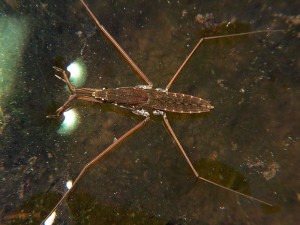 A key element of Indigenous worldview is “relationship and reciprocity”. These two concepts are united in a single phrase because they are seen as deeply related, both arising from the fundamental view that the Land generates and empowers life, including the non-material parts of life such as language, culture, and dream. As a result, people in Indigenous worldview see Knowledge as something that emerges from reciprocal relationships. In contrast, people of Western worldview see knowledge as a construct of individual human minds. The difference between these two ways of seeing knowledge itself, which is based on a fundamental difference in worldview about the nature and significance of reciprocal relationship, leads to the value systems and actions that distinguish Indigenous ways from those of most people in Western worldview.
A key element of Indigenous worldview is “relationship and reciprocity”. These two concepts are united in a single phrase because they are seen as deeply related, both arising from the fundamental view that the Land generates and empowers life, including the non-material parts of life such as language, culture, and dream. As a result, people in Indigenous worldview see Knowledge as something that emerges from reciprocal relationships. In contrast, people of Western worldview see knowledge as a construct of individual human minds. The difference between these two ways of seeing knowledge itself, which is based on a fundamental difference in worldview about the nature and significance of reciprocal relationship, leads to the value systems and actions that distinguish Indigenous ways from those of most people in Western worldview.
Because all things are both from and of the Land, they are related to one another at a profound level. This relationship is not based on preference or evolutionary hierarchy. A human being is related to a deer drinking at a stream, a water strider balancing on the surface tension of the stream, the still and moving water, the stones that cradle the water in the stream bed, and the algae that grow upon the upper faces of those stones to equal degrees — and all of these things are equally related to one another — because all the things share a common source and  sustenance. But this does not mean the human, deer, water strider, water, stone, and algae are identical to one another or not different. Each has characteristics that fit it for occupying a specific place in the web of relationships. And each must fulfill its role for the whole to function in a healthy way. It is the web of relationships between things that gives rise to a healthy world. And it is from these same relationships that Indigenous Knowledge emerges. So relationship is quite literally the fabric of reality.
sustenance. But this does not mean the human, deer, water strider, water, stone, and algae are identical to one another or not different. Each has characteristics that fit it for occupying a specific place in the web of relationships. And each must fulfill its role for the whole to function in a healthy way. It is the web of relationships between things that gives rise to a healthy world. And it is from these same relationships that Indigenous Knowledge emerges. So relationship is quite literally the fabric of reality.
Since there is no hierarchy of relationship, and since all the “jobs” are equally important to the health of every thing in the system, each time things interact they must exchange or reciprocate matter, energy, or other elements of life. If humans in a certain place kill and eat deer, the deer are giving something to the humans — but the humans are giving nothing to the deer. However, if those humans engage in some act that sustains  the life of the deer herd or gives something (a gift or offering) to the deer, they are able to reciprocate. People of many Indigenous cultures have certain specific ways they reciprocate, giving back to the plants, water, soil, and animals with which they are in relationships of mutual support. These specific means of reciprocation are usually culture-specific and often sacred or at least very private.
the life of the deer herd or gives something (a gift or offering) to the deer, they are able to reciprocate. People of many Indigenous cultures have certain specific ways they reciprocate, giving back to the plants, water, soil, and animals with which they are in relationships of mutual support. These specific means of reciprocation are usually culture-specific and often sacred or at least very private.
It is always possible, however, for any human to learn how to engage in reciprocal relationship with the air, water, soil, plants, and animals that make that person’s life possible. Caring for soil by restoring the nutrients it gives to crop plants, showing compassion and respect to an animal that gives comfort and protection, and praying or doing ritual for the health of water that sustains all our lives can all be acts of reciprocity if they are carried out with mindful integrity.
You can read more about reciprocity and its role in Indigenous worldview in this paper from the Journal of Indigenous Voices in Social Work, by Michael Anthony Hart. It’s important to understand that the same term “reciprocity” has a very different meaning in Western philosophy and academia, and that Western and Indigenous cultures use the term to refer to very different perspectives of human relationship.
